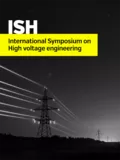Summary
The electrical faults on high voltage equipment are directly related to the partial discharge occurrence in the isolation. Therefore, the monitoring of the partial discharge levels is primordial to make an assessment the state of the equipment and to prevent unscheduled downtime. The presence of background noise in the measured signals is a major problem in partial discharge pulse identification and inserts false positives in the measurement. The wavelet shrinkage technique has provided good results in eliminating this type of noise. However, which must be the optimal base wavelet used for denoising process has been discussed. The literature presents automatic base wavelet selection methods, such as CBWS, EBWS, SWTBWS, New EBWS and SNRBWS, where each method employs different approaches to choose the optimal mother wavelet. In this paper, the performance of five automatic base wavelet selection methods for denoising partial discharge pulse signals was evaluated. For this, partial discharge signals were obtained by experiments in laboratory for denoising analysis. A High Frequency Current Transformer was used as a sensor for measurement on hydroelectric generator windings. From the measured signals, those which had pulses with large amplitudes were selected, whose background noise influence on the pulse waveforms can be neglected. Noise simulated signals were added to these signals, resulting in a signal-to noise ratio decrease and distortions in the signal. Then, the methods for optimal wavelet selection was applied to the modified signal and provide different results. The denoising process using Thresholding of Wavelet Coefficients was employed for the optimal mother wavelet given by the five methods. Finally, denoising evaluation parameters were considered to compare the similarities between an original signal and the correspondent denoised signal, in such a way as to indicate which method provided the better denoising. The correlation coefficient, mean square error, energy difference, maximum amplitude error and rise time error were considered to compare the similarities between an original pulse and the correspondent denoised pulse. This procedure basically evaluates, taking into account several possible noise levels, the ability of each decomposition selection technique to provide appropriate decompositions in order to produce better reconstructions of the pulses after the wavelet shrinkage procedure. The analysis over several noise levels makes the methodology independent of any particular noise level. The best selection method was SWTBWS, since it achieved the best result for most part of the cases, according to the adopted parameters.
Additional informations
| Publication type | ISH Collection |
|---|---|
| Reference | ISH2017_404 |
| Publication year | |
| Publisher | ISH |
| File size | 1 MB |
| Pages number | 6 |
| Price for non member | Free |
| Price for member | Free |
Authors
M.M.G. DE LIMA, A.D. GERMANO, E.G. da Costa
Keywords
Partial Discharges, Diagnosis, Monitoring, Denoising, Wavelet Shrinkage



